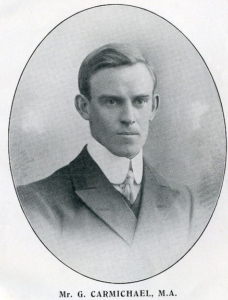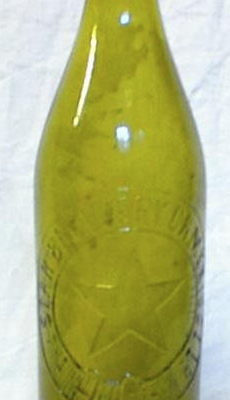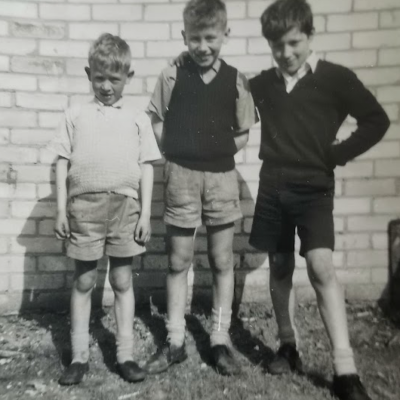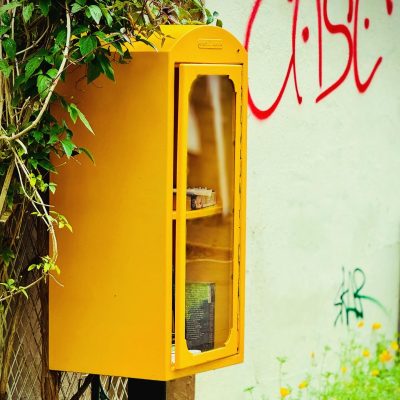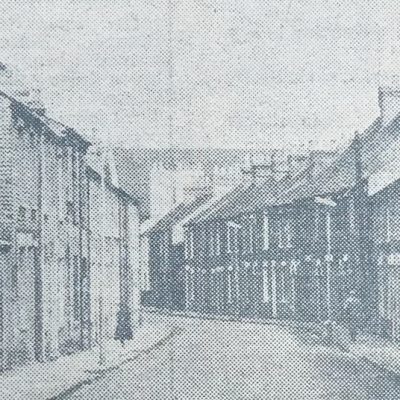Search by topic
- archaeology
- Building of Local Interest
- chapel
- charity
- church
- crime
- dressmaker
- fire
- Great Eastern Railway
- Listed building
- Mapping Relief
- medieval
- oral history
- poverty
- Public House
- Religious House
- Roman
- scholar
- school
- Then and Now
- tudor
- women
- work
- world war one
- world war two
Search by text
147 Gwydir Street
History of 147 Gwydir Street
1891
Upendra K Dutt, head, 33, medical practitioner, b India
Anna A, wife, 32, b Sweden
Emma Collins, servant, 16, b Cambridge
In 1901 the Dutt family was living at 25 Mill Road
See https://www.theedkins.co.uk/jo/gwydir/house147.htm
1901
Edward Eagle, 60, carpenter, b Cambridge
Eliza
William
Leopold
Walter Mitchell, boarder, 22, laboratory assistant, b London
1911
Eliza Eagle, 65, b Cambridge
William, 24, bricklayer, b Cambridge
Leopold, 17, laboratory assistant, b Cambridge
Edward Mansfield, 70, carpenter, b Cambridge
1913
Edward Eagle, carpenter
1914
This is given a the address of Lieutenant Gilbert Carmichael and his wife Elizabeth Helena Ablitt who were married 23.7.1914 at St Barnabas. He was killed in action 21.3.1918 serving with the Manchester Regiment.
Keighley News report dated 13th April 1918: Lieutenant Gilbert Carmichael, Manchester Regiment, was killed in action on March 21. Lieutenant Carmichael, who was a graduate of Edinburgh University, went to the Keighley Trade and Grammar School from King Edward’s school, Stafford, as a teacher of English and Latin, two months before the outbreak of war, succeeding his brother. About Christmas 1915, he joined the Artists’ Rifles and later the Officers’ Training Corps at Cambridge, and was eventually gazetted to the Manchester Regiment. He was a popular master and not only took a keen interest in the work of the school but also in the sports. He leaves a widow and one child, and is the second Trade School master to fall in the war.
Obituary from the Keighlian November 1918: Mr. GILBERT CARMICHAEL, M.A. Lieutenant. 2nd 6th Manchester Regiment.
Mr. G. Carmichael was appointed Latin and History Master at the School in May, 1914. He was a graduate of Edinburgh University and had had a distinguished career both at school and at College. He left Wallace Hall Academy, in Dumfriesshire, as Head Boy of the School, being placed First in English, First in German, First in Latin, and First in Mathematics. At Edinburgh University in addition to being- a keen student in Arts he took a lively interest in the Sports Field and received his Athletic Blue and Football Blue. In the Inter-University Sports in 1905 he took First Place in the Broad Jump against all competitors from the four Scottish Universities. Before his appointment at Keighley he was Assistant Master at March Grammar School for two years, at Ashville College for four years and at Stafford Grammar School for about six months. Mr. Carmichael succeeded his brother, Mr. Andrew Carmichael, M.A., at Keighley, when the latter left the School to take a post at Johannesburg. Mr. Andrew Carmichael was a greatly respected Master who ranks amongst the first who have ever served in the School in the affection of his colleagues and the boys. One can give no higher tribute to Mr. Gilbert Carmichael’s memory than to say that in every way he took his brother’s place in the boys regard. He took a deep interest in every side of the School’s welfare and when he left to take his place in the Army in December, 1916, a vacant place was made in the Staff that has never been filled since his departure. Mr. Carmichael entered the Army on January 1st, 1917, and was trained at Brockton and Cambridge with the Artists’ Rifles. He left for France in October, 1917, as Lieutenant in the Infantry. He spent the winter in the trenches and was in the front line about twelve miles south of St. Quentin when the Germans opened their offensive on March 21st. Mr. Carmichael was killed by a shell just as the Germans made their attack. He was greatly respected by his men, and in a letter sent by Lieutenant Colonel Melville, his Officer Commanding, to Mrs. Carmichael, he is spoken of as one of the best and most reliable of his Officers. The letter sent by his Captain is worthy of a place in our Magazine: April 8th, 1918. Dear Mrs. Carmichael, The depth of our own sorrow in the loss of our dearest comrade enables us to realize what an irreparable loss you have suffered; and for you and the little daughter – of whom we heard so much – it is left to me to express our deepest sympathies. Such was fate that I was on leave and your husband was in command of the Company. With him were as gallant and brave a set of lads as ever one could wish for. When the onslaught came two courses were open. They could withdraw or they could stand their ground and fight to the last. For such men only one course was considered; and so it comes about today that not one of those officers and men is with us. Mr. Carmichael was killed by a shell and the message containing the news was the last to reach the Battalion Head-quarters. Since then we have heard no further news of any of them. And so, unfortunately, his kit and private possessions will not be able to be recovered. Let us hope the enemy may forward on to you anything they get. Again let me offer our very sincerest sympathies in the loss of such a gallant husband, who was ever in the six months he was with us one of the very best. Believe me, Yours very sincerely, Cyril Hargreaves, Captain. Every one who knew Mr. Carmichael had the highest regard for him, and we his colleagues, and the boys all offer to Mrs. Carmichael and her little daughter our respectful sympathy in the great loss which they have sustained.
1915 CIP 15.10.1915: Roll of Honour Second Army Enlistments: Walter John Ablitt, 147 Gwydir Street
1937
George William Hatton
1962
George W Hatton
1970
Mrs L Hatton
Contribute
Do you have any information about the people or places in this article? If so, then please let us know using the Contact page or by emailing capturingcambridge@
License
This work is licensed under CC BY-NC-SA 4.0





